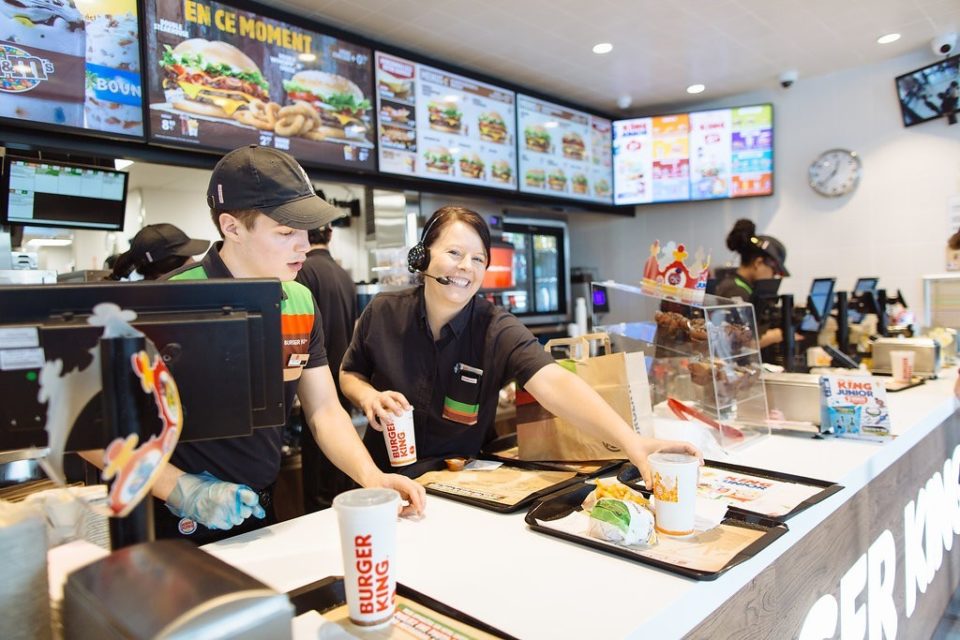The context for cultures is changing.
In four vital ways.
Firstly – the relationship between customers and companies is shifting as social media dissolves the traditional divide between the parties. Specifically social has shifted the goalposts in terms of familiarity. Facebook, Google and Twitter have brought consumers closer to brands than ever before. And as people shift their relationships with brands, the processes that link customers with brands and their cultures are also changing. Those relationships are becoming much more interactive and increasingly they’re taking place in real time.
Actually, the underlying relationship is changing in an even more fundamental way still. Increasingly brands are transforming from individual purchase decisions to shared values or belief systems and brands are bonding with their customers on that basis. That shift has major implications for how brands organize and run their cultures. Looking forward, brands cannot expect to simply market products. And a culture cannot simply expect to service that market and the brand’s customers. A brand, its culture and its customers now not only need to concur on a distinctive belief system, but also to interact and build trust and loyalty as a community on that basis.
Secondly, and in parallel with the above, consumers now want to deal with brands that fundamentally understand them and interact with them as human beings. Really, it’s those interactions and the experiences generated by those interactions that increasingly make brands valuable. It’s then that customers decide whether they want to form a relationship with you, or they’re “just looking thanks”. If you’re a high-touch brand, it’s actually the people that make touchpoints magical.
Because of that, the role of the people within a brand is also retrending. Specifically, as quality relationships become the key decider for customers, the emphasis for people inside a culture shifts to establishing and building what they have in common with customers rather than what they are looking to get their customers to do. And as a result, it’s inevitable in my opinion that people working for a brand will transit from makers, guardians and sellers to socializers and curators.
Thirdly – to help build sustained and close relationships with customers based around shared beliefs, brands will need to foster a much greater sense of purpose inside their culture. I believe purpose will replace mission and vision. People need a powerful purpose because it takes huge energy to work in the ways outlined above. To inspire that level of motivation, people need something to commit to collectively; something they feel will actually make a difference. An idea that justifies spending the huge amount of time they do at work.
As Walt Disney said, “You can dream, create and build the most wonderful place in the world, but it requires people to make the dream a reality”. When you give your people a deep and rich cause to work for, and a direction in which to take that cause, you give them purpose. When an organization has a purposeful culture, it has focus. Your purpose is your company’s mindset strategy. It determines the headspace in which your people work together and in which you go to market as a company. Get it right – and you have a cause that is powerful enough for hundreds of people to leap out of bed every weekday morning and get to work. They are quite literally looking to make a change to the world they believe in because, as Hugh MacLeod expressed it so perfectly, “Life is too short not to do something that matters”.
Finally, no change will last if employees themselves don’t value what they are doing and have not made a personal decision to make the changes needed to accomplish all of the above. “We” won’t change until “me” changes. As Paul Stewart says, it’s only at that point that you will see the most important change in a culture: from a basis of compliance to a foundation of commitment that starts and ends with each person working for what the brand means for them.
To do that, brands need to give individuals the actions, attitudes, changes and tools they need to turn the communal idea into something that they each talk about and are excited by. People need to see that there are implications for them in what they do, in what happens, in where that leads and in what the business achieves collectively. That’s why companies need to take the time and invest the resources to make the brand and all it means real for people, no matter where they work in the organization. You can’t give to a brand, if you don’t live by what it strives to achieve. Ultimately, business is becoming much more social and therefore much more personal.
We’ve tended for sometime, quite rightly, to regard the customers and cultures of brands as inter-related. But those groups are becoming integrated and interactive as a community. The walls between the brand inside and the brand outside are falling. In a world of increasing sameness of product, how you as a business intend to change the world, and the story you tell yourselves and others around that intention, is what will galvanize your people and distinguish you as a brand and a competitor from all the other brands around you. To make that happen, you will need people with a purpose to work to, a story that they agree on and a strategy that will help them get to where you know you need to be.
To sell your products effectively, everyone will need to buy the brand. Literally. And/or at least philosophically. After all, if there’s nothing in it for “me”, there can’t possibly be anything in it for “us”, never mind anyone else.
The Blake Project Can Help: Please email us for more about our purpose, mission, vision and values and brand culture workshops and programs.
Branding Strategy Insider is a service of The Blake Project: A strategic brand consultancy specializing in Brand Research, Brand Strategy, Brand Growth and Brand Education





3 comments
Arshad
October 20, 2014 at 1:48 am
Great piece Mark, with some really thought provoking insights on changing brand culture, before expanding on second point of relationship, remember that your brand sets the product personality and helps separate it from competitors (1).
And considering the fact mentioned by Mark above “…In a world of increasing sameness of product…” in other words the homogeneity of products/services due to constant increase in number of businesses around the globe and higher failure of new products/services, according to a study “Nearly 50 percent of new products introduced in the market are complete failures and more than 70 percent do not reach their sales goals.” (2)
I believe that relationship marketing has key and vital role to play to set your brand apart from the rest of the “me-toos”, because as a small medium business you can’t afford new product/service failures but you can afford branding!
1.Susan Fournier, “Consumers and Their Brands: Developing Relationship Theory in Consumer Research,” Journal of Consumer Research, March 1998, pp. 343-373
2.Delre, S.A., Jager, W., Bijmolt, T.H.A. and Janssen, M.A. (2007), “Targeting and timing promotional activities: an agent-based model for the takeoff of new products”, Journal of Business Research, Vol. 60 No. 8, pp. 826-835.
Maciej Fita
October 20, 2014 at 10:58 am
Social media has really been a wrench in the gears type of moment but I think more companies are starting to embrace the channels. I still talk to companies that think it might not be for them or they don’t need but the truth is every business should be embracing social media communication.
Jason Deal
October 21, 2014 at 9:24 am
Really nice synopsis of some very big, nuanced trends. An underlying challenge as brands make this evolutionary journey is moving from a quarterly (or faster) planning/optimization mind-set to a long-term behavioral commitment (e.g. Patagonia). Especially true for non-lifestyle brands. Wall Street doesn’t care about a company’s ideals or purpose.
Comments are closed.